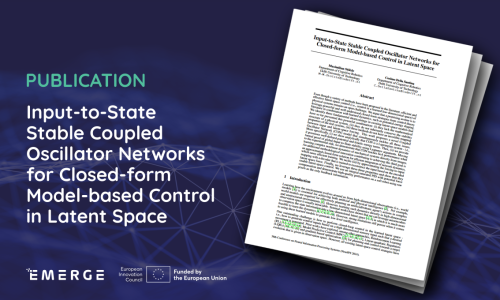15 December 2024


Learning how the environment evolves around us from high-dimensional observations (i.e., world models) is essential for achieving both artificial and physical intelligence. For example, world models are required for effectively planning an artificial/robotic agent’s actions in complex and unstructured environments. However, learning such dynamics directly in high-dimensional observation space is usually intractable. Seminal works have shown that autoencoders can be leveraged to compress the state information into a low-dimensional latent space in which it is much more feasible to learn the dynamics. Even though a variety of methods have been proposed in the literature, efficient and effective latent-space control (i.e., control in a learned low-dimensional space) of physical systems remains an open challenge.
In this work, EMERGE partners from Delft University of Technology argue that a promising avenue is to leverage powerful and well-understood closed-form strategies from control theory literature in combination with learned dynamics, such as potential-energy shaping. The authors identify three fundamental shortcomings in existing latent-space models that have so far prevented this powerful combination: (i) they lack the mathematical structure of a physical system, (ii) they do not inherently conserve the stability properties of the real systems, (iii) these methods do not have an invertible mapping between input and latent-space forcing.
This work proposes a novel Coupled Oscillator Network (CON) model that simultaneously tackles all these issues. More specifically, the group shows analytically that CON is a Lagrangian system - i.e., it possesses well-defined potential and kinetic energy terms and provides formal proof of global Input-to-State stability using Lyapunov arguments.
Read the paper in the link below.


